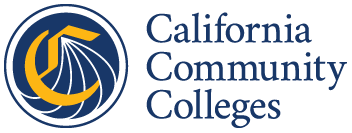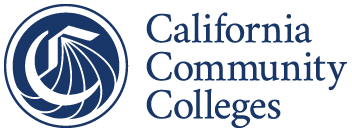Strong Workforce Task Force Recommendation #3 states: “Develop and broadly publicize industry-informed career pathways that prepare students for jobs needed within the regional labor market.”. Below are helpful resources:
Career Pathway Systems
System frameworks for career pathway partnerships
- Career Pathway Systems; Perkins Collaborative Resource Network (connects Perkins Program of Study and federal definition of career pathway in WIOA and HEA)
- Career Pathways Toolkit November 2016 - Federal Skills Working Group
- Improving Career and Technical Education in America - Nancy Hoffman, Chapter Four of Preparing Today's Students for Tomorrow's Jobs in Metropolitan America, Laura W Perna, Editor, 2013
- Putting Learner Success First: A Shared Vision for the Future of CTE, Advance CTE, 2016
- CLASP Alliance for Quality Career Pathways, June 2014
- Alliance Framework (Ten state full report)
- Alliance Executive Summary
- Alliance/WIOA Summary (Alignment with Workforce Innovation and Opportunity Act - WIOA)
- Career Pathways Explained (Career Pathways 101)
Design of Career Pathway Programs
Comprehensive education and employment service innovations for disparately impacted populations delivered through regional partnerships
Two federal laws, the Higher Education Act and the Workforce Innovation and Opportunity Act, share this definition of career pathway: a combination of rigorous and high-quality education, training and other services that (A) aligns with the skill needs of the economy; (B) prepares an individual to be successful in any of a full range of secondary or postsecondary education options including apprenticeships; (C) includes counseling to support an individual in achieving the individual's education and career goals; (D) includes, as appropriate, education offered concurrently with and in the same context as workforce preparation activities and training for a specific occupation or occupational cluster; (E) organizes education, training, and other services to meet the particular needs of an individual in a manner that accelerates the educational and career advancement of the individual to the extent practicable; (F) enables an individual to attain a secondary school diploma or its recognized equivalent, and at least 1 recognized postsecondary credential; and (G) helps an individual enter or advance within a specific occupation or occupational cluster.
- Employment Status of Postsecondary Completers in 2009: Examination of Credential Level and Occupational Credentials - NCES Data Point, November 2016
- MDRC Research on Career Pathways - 2016 Issue Brief
- Investing in Bridge Programs as a Strategy for Student Success / Bridging the Gap Infographic
- Integrated Education and Training: Model Programs for Building Career Pathways for Participants at Every Level, August 2016
- College Counts - Evidence of Impact / College Counts Infographic
- Building Community Partnerships to Serve Immigrant Workers - National Council for Workforce Education (NCWE)
- Postsecondary Partnerships in Collective Impact
- California Career Pathways: Connecting the Work, November 2016
- California Career Pathways – A new tool helps practitioners, policymakers, and funders strengthen existing activity, start new partnerships, and join resources to scale and sustain California career pathway systems. Visit CACareerPathways.CLASP.org to get started.
What are Guided Pathways?
Guided pathways can fit the HEA and WIOA career pathway definition above if there is intentional partnership to address these components: (A) sector focus; (C) career counseling; (G) specific occupational advancement.
- Implementing Guided Pathways: Early Insights From the AACC Pathways Colleges - Jenkins, April 2017; This report provides insight into work at all 30 colleges participation in the American Association of Community Colleges’ (AACC) Pathways Project. Projects teams from all institutions describe how they are approaching reforms in the four main practice areas of guided pathway reform: mapping pathways to student end goals; helping students choose and enter a program pathway; keeping students on a path; and ensuring that students are learning.
- Redesigning America's Community Colleges - Bailey, March 2016
- What We Know About Guided Pathways - March 2015
- The Movement Toward Pathways - AACC, 2015
- Guided Pathways Demystified - Johnstone, November 2015
- Guided Pathways Demystified II – Johnstone, September 2017
- Dual Enrollment Toolkit - Career Ladders Project 2016
- Career And Technology Education Management Application (CATEMA™) System
- Redesigning CC for Student Success - Jenkins, August 2014
California Specific Models of Career Pathway Reforms
- Summary of California State Plan Goals - 3 Policy Objectives; 7 Program Strategies
- Complete California's Unified Strategic Workforce Development Plan for Program Years 2016-2020 - California Workforce Development Board - focus on pages 58-64; 73-83
- Career Advancement Academies: Insights into Contextualized Teaching and Learning - Equal Measure & Career Ladders Project, March 2016
- California's EDGE: Keeping California Competitive, Creating Opportunity
Exemplar Case Studies
- Hartnell College/CSU-Monterey’s CS-in-3 (computer science bachelor degree in 3 years)
- College Counts, Arkansas Career Pathway Initiative (college pathways for low-income parents)

